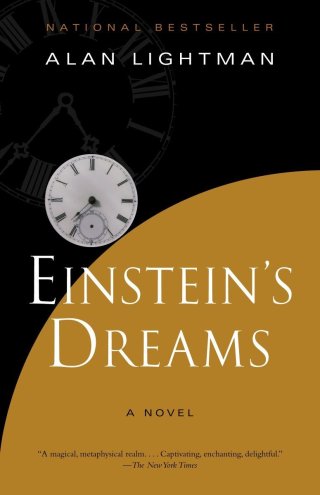“A life in the past cannot be shared with the present. Each person who gets stuck in time gets stuck alone.”
“When you realize you are mortal,” the poet, painter, and philosopher Etel Adnan wrote while regarding a mountain, “you also realize the tremendousness of the future.” A decade earlier, shortly before a heart attack severed her life-time, Hannah Arendt observed in her superb Gifford Lectures lectures on the life of the mind that our finitude, “set in an infinity of time stretching into both past and future, constitutes the infrastructure, as it were, of all mental activities.” While Arendt was composing these thoughts and silent cells were barricading one of her arteries, Ursula K. Le Guin was composing her novelistic inquiry into what it means to live responsibly, observing: “If time and reason are functions of each other, if we are creatures of time, then we had better know it, and try to make the best of it.” A generation before her, Borges had formulated the ultimate declaration of our temporal creatureliness, declaring: “Time is the substance I am made of. Time is a river which sweeps me along, but I am the river; it is a tiger which destroys me, but I am the tiger; it is a fire which consumes me, but I am the fire.”
Half a century of neuroscience and psychology have confirmed the physical fact beneath the poetic sentiment — we now know that our experience of time is the crucible of empathy and the defining dimension of personal identity.
Discus chronologicus — a German depiction of time from the early 1720s, included in Cartographies of Time. (Available as a print and as a wall clock.)
The young clerk at the Zurich patent office was thinking about none of this in the spring of 1905, the spring of a new century still verdant with possibility, when he dreamt up his general relativity — the refutation of Newton that would rattle the flow of existence, forever changing our understanding of time; rather, Einstein was thinking of time as a plaything of mathematics, the cold clay of an impartial universe in which we ourselves are playthings of chance.
Or was he?
After all, a revolution in understanding time is a revolution in understanding ourselves as creatures of time, and no human being — not even the most abstract-minded physicist — can think about time without thinking about what it means to be human, to be concretely oneself, tender with transience.
That is the predicate of the slender, poetic 1993 novel Einstein’s Dreams (public library) by physicist Alan Lightman — a book about time and the tricks we play on ourselves to bear our transience, a book that does for time what Alain de Botton’s The Course of Love does for love: punctuating a fictional world with philosophical quickenings, thought experiments, lyrical reflections on a fundamental human dimension of the real world.
The young Einstein, overworked and burning with ideas, falls asleep at his patent office desk on a series of nights in that fertile spring of 1905, to dream of worlds in each of which times works differently. Each betokens a particular manifestation of our time-anxiety, that defining anxiety of our lives — each a particular tapestry of our hopes, fears, and other flights from the only reality we have and only place we really inhabit: the present.
In one of these worlds, two times exist in parallel — mechanical time, “as rigid and metallic as a massive pendulum of iron that swings back and forth, back and forth, back and forth,” and body time, pulsating with aliveness that “squirms and wriggles like a bluefish in a bay.” This world is a testament to astronomer Maria Mitchell’s long-ago lament that “it seems to be difficult for any one to take in the idea that two truths cannot conflict” — in it, people live out their lives subscribing to one time, distrusting and deriding the very existence of the other:
Where the two times meet, desperation. Where the two times go their separate ways, contentment. For, miraculously, a barrister, a nurse, a baker can make a world in either time, but not in both times. Each time is true, but the truths are not the same.
Another dream draws on the real history of how Galileo invented timekeeping to paint a world in which people journey to the Temple of Time to worship the Great Clock enshrined in it — a world part-prophecy and part-admonition, caricaturing our modern cult of the clock as humanity’s great concession in letting time reign, in Nina Simone’s soulful words, as “the great dictator.” Lightman writes:
Long ago, before the Great Clock, time was measured by changes in heavenly bodies: the slow sweep of stars across the night sky, the arc of the sun and variation in light, the waxing and waning of the moon, tides, seasons. Time was measured also by heartbeats, the rhythms of drowsiness and sleep, the recurrence of hunger, the menstrual cycles of women, the duration of loneliness. Then, in a small town in Italy, the first mechanical clock was built. People were spellbound. Later they were horrified. Here was a human invention that quantified the passage of time, that laid ruler and compass to the span of desire, that measured out exactly the moments of a life. It was magical, it was unbearable, it was outside natural law. Yet the clock could not be ignored. It would have to be worshipped. The inventor was persuaded to build the Great Clock. Afterwards, he was killed and all other clocks were destroyed. Then the pilgrimages began.
Guide to the Temple of Time by the visionary 19th-century cartographer and information designer Emma Willard. (Available as a print.)
There is a world in which “time is a circle, bending back on itself” so that every instance, every event, every person “repeats itself, precisely, endlessly.”
There is a world in which time comes with a pre-determined terminus, the precise date of which is known to all inhabitants, none of whom seem to mind that the world is ending, for “a world with one month is a world of equality.”
There is a world in which entropy moves in reverse, everything tending from chaos to order, from dissolution to coherence — the shoreline rebuilt with each lapping wave, the house paint growing more vibrant with each passing season.
There is a world located at the center of time, where time stands still, traveling outward in concentric circles to the outside worlds. Lovers and the parents of small children make pilgrimages to this place, hoping to preserve their fleeting bliss:
Some say it is best not to go near the center of time. Life is a vessel of sadness, but it is noble to live life, and without time there is no life. Others disagree. They would rather have an eternity of contentment, even if that eternity were fixed and frozen, like a butterfly mounted in a case.
There is a world in which imagining the future — that capacity for mental time-travel essential for our humanity — “is no more possible than seeing colors beyond violet,” and so every experience is absolute and eternal to those undergoing it:
In a world without future, each parting of friends is a death. In a world without future, each loneliness is final. In a world without future, each laugh is the last laugh. In a world without future, beyond the present lies nothingness, and people cling to the present as if hanging from a cliff.
Then there is the opposite world, in which the future is an omnipresent fixity:
This is a world in which time is not fluid, parting to make way for events. Instead, time is a rigid, bonelike structure, extending infinitely ahead and behind, fossilizing the future as well as the past. Every action, every thought, every breath of wind, every flight of birds is completely determined, forever… In a world of fixed future, life is an infinite corridor of rooms, one room lit at each moment, the next room dark but prepared. We walk from room to room, look into the room that is lit, the present moment, then walk on. We do not know the rooms ahead, but we know we cannot change them. We are spectators of our lives.
Then there is the opposite of the opposite, in which the past — that sole solidity of the real world — is unfixed, unvoided of possibility. In that world, a middle-aged man has spent his life trapped in a painful memory of childhood humiliation that has come to define his identity and behavior, until one day he wakes up to a different past, devoid of the event that produced the memory, and is suddenly a different person altogether. (Isn’t this the great dream of therapy, the great gift of healing — the dream of self-revision?) From this imaginary world, as from all the rest, Lightman wrests a reflection on the real world, lucid and lyrical:
What is the past? Could it be, the firmness of the past is just illusion? Could the past be a kaleidoscope, a pattern of images that shift with each disturbance of a sudden breeze, a laugh, a thought? And if the shift is everywhere, how would we know?
[…]
In a world of shifting past, these memories are wheat in wind, fleeting dreams, shapes in clouds. Events, once happened, lose reality, alter with a glance, a storm, a night. In time, the past never happened. But who could know? Who could know that the past is not as solid as this instant, when the sun streams over the Bernese Alps and the shopkeepers sing as they raise their awnings and the quarryman begins to load his truck.
Vanish by Maria Popova. (Available as a print.)
Having spent half of my own life trapped in a self-created world of rigid routines and clockwork habits — a half-conscious effort to manufacture the illusion of constancy and continuity, to cope with the uncertainty and unpredictability of life, to deny the fact that to be human is to be inconstant and discontinuous ourselves — there is one world that particularly thrills me and particularly terrifies me:
In this world time is not continuous. In this world time is discontinuous. Time is a stretch of nerve fibers: seemingly continuous from a distance but disjointed close up, with microscopic gaps between fibers. Nervous action flows through one segment of time, abruptly stops, pauses, leaps through a vacuum, and resumes in the neighboring segment. So tiny are the disconnections in time that a single second would have to be magnified and dissected into one thousand parts and each of those parts into one thousand parts before a single missing part of time could be spotted.
So tiny are the disconnections in time that the gaps between segments are practically imperceptible. After each restart of time, the new world looks just like the old. The positions and motions of clouds appear exactly the same, the trajectories of birds, the flow of conversations, thoughts.
The segments of time fit together almost perfectly, but not quite perfectly. On occasion, very slight displacements occur. For example, on this Tuesday in Berne, a young man and a young woman, in their late twenties, stand beneath a street lamp on Gerberngasse. They met one month ago. He loves her desperately, but he has already been crushed by a woman who left him without warning, and he is frightened of love. He must be sure with this woman. He studies her face, pleads silently for her true feelings, searches for the smallest sign, the slightest movement of her brow, the vaguest reddening of her cheeks, the moistness of her eyes.
In truth, she loves him back, but she cannot put her love in words. Instead, she smiles at him, unaware of his fear. As they stand beneath the street lamp, time stops and restarts. Afterwards, the tilt of their heads is precisely the same, the cycle of their heartbeats shows no alteration. But somewhere in the deep pools of the woman’s mind, a dim thought has appeared that was not there before. The young woman reaches for this new thought, into her unconscious, and as she does so a gossamer vacancy crosses her smile. This slight hesitation would be invisible to any but the closest scrutiny, yet the urgent young man has noticed it and taken it for his sign. He tells the young woman that he cannot see her again, returns to his small apartment on Zeughausgasse, decides to move to Zürich and work in his uncle’s bank. The young woman walks slowly home from the lamppost on Gerberngasse and wonders why the young man did not love her.
Art from the 19th-century French physics textbook Les monde physique. (Available as a print, as stationery cards, and as a face mask.)
This world might also be the incubus of Lightman’s uncommon insight into our longing for absolutes in a relative world and what actually gives meaning to our temporal lives — ideas contoured in Einstein’s Dreams, which he would shade in over the course of decades with his uncommon palette of physics and existential poetics.
Take, for instance, the dream-world in which time does not flow but sticks, adhering each town to a particular point in history and each person to a particular point in life. There is no shared stream of present in this world — only islands of neighboring solitudes, each suspended in a different moment of a different past:
The tragedy of this world is that no one is happy, whether stuck in a time of pain or of joy. The tragedy of this world is that everyone is alone. For a life in the past cannot be shared with the present. Each person who gets stuck in time gets stuck alone.
This, indeed, is the silent refrain of the novel: the haunting reminder that however the past and the future might unfold and refold in the origami of even the most elaborate time-model, unless we live in the present, we are not living at all. I am reminded of Kafka: “Reality is never and nowhere more accessible than in the immediate moment of one’s own life. It’s only there that it can be won or lost.” I am reminded of Kierkegaard a century before him: “The moment is not properly an atom of time but an atom of eternity. It is the first reflection of eternity in time, its first attempt, as it were, at stopping time.” Above all, I am reminded of Gaston Bachelard, who reconciled Einstein and Bergson’s historic debate about time with a larger truth merging the scientific reality and the subjective human truth of time: “If our heart were large enough to love life in all its detail, we would see that every instant is at once a giver and a plunderer.”
Meteors by Étienne Léopold Trouvelot. (Available as a print, as stationery cards, and as a face mask.)
This intimation is what Einstein’s Dream leaves lingering in the deliciously discomposed mind. In the last world, which the dreamt-up Einstein dreams up in the first week of summer, time is a flock of nightingales. People race to capture under bell jars, and mostly fail. Only children have the energy and speed to catch the birds, but children have no desire to catch them, for time is already moving too sluggishly for them, each summer month already an eternity. (Which of us can forget the vast spacetime of loneliness that slackens the hammock of childhood?) On those rare occasions when an adult captures a nightingale under their bell jar, they rejoice in the frozen moment, but only for a moment — eventually, they discover that life itself is a warm-blooded creature, pulsating with the flow of time:
They savor the precise placement of family and friends, the facial expressions, the trapped happiness over a prize or a birth or romance, the captured smell of cinnamon or white double violets. The catchers delight in the moment so frozen but soon discover that the nightingale expires, its clear, flutelike song diminishes to silence, the trapped moment grows withered and without life.
Like The Little Prince, Einstein’s Dreams remains one of those endlessly rereadable classics, unfurling new splendors of insight and subtleties of feeling which each reading. Complement it with Kahlil Gibran on befriending time, then revisit the little loophole in the Big Bang exploring when time really began.
donating = loving
For 15 years, I have been spending hundreds of hours and thousands of dollars each month to keep Brain Pickings going. It has remained free and ad-free and alive thanks to patronage from readers. I have no staff, no interns, no assistant — a thoroughly one-woman labor of love that is also my life and my livelihood. If this labor makes your life more livable in any way, please consider aiding its sustenance with donation.
newsletter
Brain Pickings has a free weekly newsletter. It comes out on Sundays and offers the week’s most inspiring reading. Here’s what to expect. Like? Sign up.





